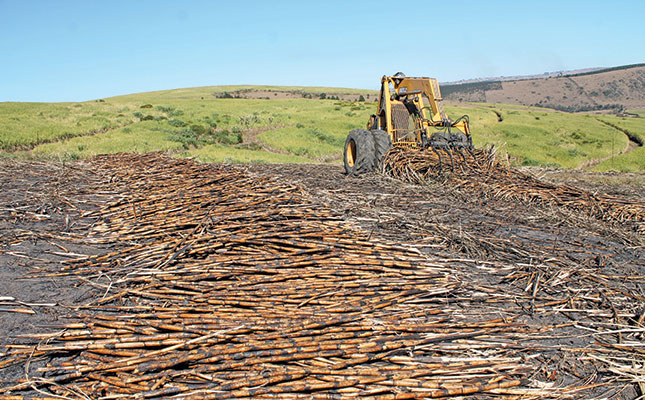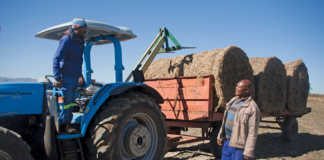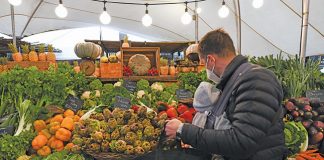
Photo: Lloyd Phillips
When she joined her family’s farming operation in 2011, after qualifying with a BSc in conservation ecology from Stellenbosch University, Chloe Clegg brought with her a wealth of fresh ideas.
These included improving on the production methods used by her father, Guy, in his many years as a sugar cane farmer on their 1 220ha of farmlands in the Harding and Hluku areas of KwaZulu-Natal.
Her ideas would complement Guy’s efforts to implement regenerative agriculture practices, such as developing a large-scale vermiculture system.
“My father wanted to see if we could improve soil health and crop yield by applying more vermicast and worm tea and less inorganic fertiliser,” explains Clegg.
“If it worked, it would also save us money because we’d need to buy in less inorganic fertiliser. And we have plenty of scrap sugar cane stalks and tops, as well as jungle wattle and bugweed, to use as food for the earthworms.”
Trials
Clegg was allocated the 824ha sugar cane enterprise to manage and soon thereafter made contact with Gary Farr and Stuart Lindsay of Regenerative Agriculture Specialization, based in Pietermaritzburg.
In particular, she sought their guidance on what regenerative products and practices would work synergistically with vermicast to improve sugar cane soils’ biology and productivity.
“My father and I used to apply CMS [concentrated molasses solids], a by-product of the sugar cane milling process, to the sugar cane as a base organic soil nutrient.
We then supplemented with inorganic fertilisers. But we found it challenging to manage CMS application rates and times. The Glen Rosa and Dwyka soil types that are common across our sugar cane fields are not naturally fertile and productive.
So we agreed that we’d start trialling granular fertilisers complemented by the worm products to boost soil and crop productivity,” she says.
Recycling farm residues
The key to their trialling vermicast and worm tea as organic fertilisers was having a vermiculture system that could produce sufficient volumes.
Clegg and her father now use sugar cane waste and residues, together with chipped bugweed and brushwood from the farm, in windrows over 2ha that are jam-packed with hard-working red wiggler earthworms (Eisenia fetida).
To soften and preliminarily break down the coarse organic plant materials to a level the worms can feed on, these materials are first composted using chicken litter.
Farr explains that earthworm feeding activity not only breaks down organic matter into rich soil and plant nutrients, but also introduces and promotes beneficial microbes into the soil.
These not only improve soil and plant health, but also help suppress pests and diseases, and increase the availability of soil nutrients to plants by working synergistically with plant roots and mycorrhizae.
“Vermicast is an excellent source of beneficial microbes and earthworm eggs to repopulate soil that has been depleted of these organisms,” says Farr.
The earthworms in the cropping cycle
Clegg runs a dryland sugar cane enterprise of which about 50%, comprising roughly 450ha, is harvested for milling in an 18- to 24-month cycle. She harvests at least a further seven ratoon crops before ploughing the crop out ahead of replanting a land with seed cane.
Immediately prior to planting a seed cane crop, Clegg uses a fertiliser spreader to broadcast 10t/ha of vermicast onto the soil surface. The planting process incorporates it into the soil.
The vermicast, which also adds stable carbon to the soil, gives the young sugar cane crop a strong start that will hopefully extend the number of its ratoons showing satisfactory yields. The crop is also broadcast-treated with 800kg/ ha to 1 000kg/ ha of Langphos slow-release phosphorus.
To further boost the life and productivity of her older sugar cane crops, Clegg broadcasts a further 1t/ha to 3t/ha of vermicast onto each young ratoon field.
The organic vermicast supplements and complements the lime and inorganic chemical nitrogen (N), phosphorus (P) and potassium (K) fertilisers that Clegg applies to her plant and ratoon sugar cane crops. She says the lime is used more to improve the soil calcium (Ca) level than to treat soil acidity.
Calcium also loosens the soil structure to enable oxygen, nutrient, moisture and root penetration.
“We use calcitic lime, at rates determined by soil testing, because our soils are generally deficient in Ca. We only use gypsum at planting if there’s subsoil acidity in a particular field.
The Ca-to-magnesium ratio in the soil must be balanced to help reduce soil compaction.
“On its own, lime moves slowly down the soil profile, but the more soil microbes there are, the faster the lime is carried down,” she says.
Earthworms are also important transporters of lime from the soil surface to deeper in the soil profile, according to Farr.
“This is important in perennial crops where it’s not possible to mechanically incorporate lime into the soil.”
The NPK fertilisers contribute significantly to sugar cane yields, but are insufficient as macronutrients on their own. For example, while N promotes rapid sugar cane growth, this compromises the plants’ resistance to pests and diseases.
Clegg says the vermicast and worm tea contain high levels of beneficial micronutrients to provide the sugar cane crops and soil with the nutritional balance they need for optimal productivity and health.
A nice cup of worm tea?
Clegg makes her worm tea by steeping a 40kg bag of vermicast in 900ℓ to 1 000ℓ of water that is agitated for 24 hours by an aerating pump system. To enhance the mixture, she adds 150kg of urea, 1kg of fulvic acid powder and 3kg of humic acid powder.
A 2 500ℓ tanker is used to apply the tea to two-month-old sugar cane crops that have sufficient leaves to catch and absorb the nutrients. Initially, 1 000ℓ of the concentrated mixture is transferred to the tanker; this is then diluted with 1 000ℓ to 1 500ℓ of water.
On the advice of Farr and Lindsay, Clegg mixes in 750ml each of AfriKelp natural growth stimulant and Supergrow microencapsulated beneficial microbes. This final worm tea mixture is applied at 1 500ℓ/ha.
Clegg explains that her research has found that foliar-applied nutrients are 12 times more effective than granular fertilisers, and are far less susceptible to N volatilisation into the atmosphere.
“We’ve already seen our poorer sugar cane fields that were treated with worm products increase their average yield from 45t/ha to 90t/ha in a single season. Our average sugar cane yield across the farm is now 102t/ha, and with an average RV [recoverable value] of around 12%.
“The pest pressure, especially from Eldana saccharina [African sugar cane borer] in our more susceptible N31 variety sugar cane fields, has reduced to half of what our neighbour’s less susceptible N12 variety sugar cane is experiencing.
“I’m also pleased to see that earthworm activity is increasing in the root zones of sugar cane fields that we’ve been treating with worm products,” she says.
Clegg has also noticed two other improvements in the treated fields: soil compaction has reduced as a result of increased soil organic matter and enhanced soil structure, and rain appears to penetrate the soil more rapidly and be retained for longer.
She adds that with South Africa’s sugar prices “in a ditch”, and sugar cane farmers struggling financially, cutting inorganic fertiliser costs has become a priority.
“Our average sugar cane yields are improving nicely, but I now want to experiment with using natural methods and biological products to increase our average RV while decreasing our K and P inorganic fertiliser requirements. And I want to see if I can find more natural alternatives to artificial ripening of our sugar cane ahead of harvesting.”
Email Chloe Clegg at [email protected]











